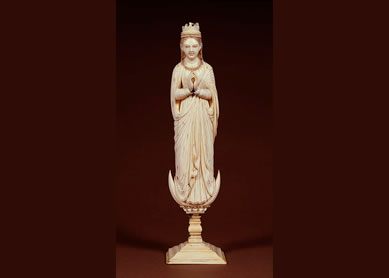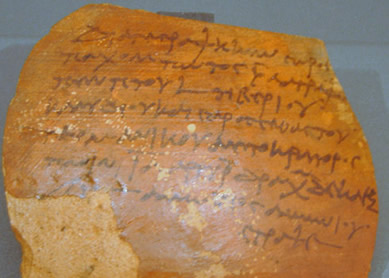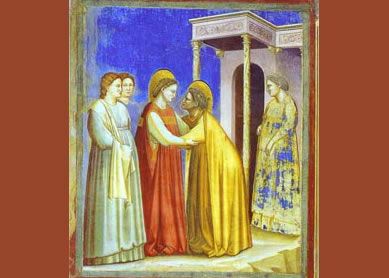Although Anna appears only briefly in the Gospel of Luke, she plays an important role in the infancy narrative (Luke 2:36-38). As a named, female character, she also exemplifies a key feature of this gospel. Yet, as Turid Seim and others have argued, Luke both elevates and limits the role of women in his gospel narrative.
Who is Anna?
Anna appears in a pivotal scene in Luke 2:22-38, which tells the story of the infant Jesus being presented in the temple by his parents. Luke notes that Anna “never left the temple but worshiped there with fasting and prayer night and day” (Luke 2:37), demonstrating for readers that she exemplifies a righteous woman. Given Luke’s portrayal of Elizabeth earlier in the infancy story, it makes sense that such a devout female would be featured in this important moment in Jesus’s life. In addition to the description of her piety, Anna is called a prophet. This is no insignificant title as it implies that Anna receives, trusts, and speaks the word of God. In this regard, the widow Anna is reminiscent of both Mary, the virgin (Luke 1:38), and the aged Elizabeth (Luke 1:45), the two female characters that figure prominently in Luke’s opening chapter. Anna is an exceptional and pious woman, which makes her worthy of being the first woman other than Mary herself to see the infant. Anna appears in the scene just as Simeon, upon seeing the infant Jesus and his parents, offers his spirit-filled words of praise to God. Witnessing what is happening, Anna, too, begins “to praise God and to speak about the child to all who were looking for the redemption of Jerusalem” (Luke 2:38).
Why is Anna important?
In this brief scene, Anna both continues the theme of women’s prophecy that permeates Luke’s infancy narrative and prefigures what Peter declares in Acts 2:17, when he recites Joel 2:28: “In the last days it will be, God declares, that I will pour out my Spirit upon all flesh, and your sons and your daughters shall prophesy.” Great significance is bestowed upon the prophet Anna. Nonetheless, Luke limits her portrayal through the literary device that Turid Seim calls pairing, where every female character is presented with a male counterpart, rather than standing independently on her own. Anna’s pairing is with Simeon, a righteous man who had been told by the Holy Spirit that “he would not see death before he had seen the Lord’s Messiah” (Luke 2:26). Functioning as a complementary character, Luke’s portrayal of Anna is dependent on her pairing with Simeon, which has the effect of muting Anna’s presence in the gospel. Unlike Simeon, Anna is not given any dialogue. Despite being identified as a prophet, she does not speak. Thus, whereas some see the pairing of women and men in Luke as indication that the narrative elevates women’s voice, Seim argues otherwise.
In sum, Anna plays an important, though ambiguous, role in Luke’s infancy narrative. On one hand, she is a featured character in Luke’s story of Jesus. Her presence and her powerful identification as a prophet mark her as highly significant. Relative to Simeon, though, she is less prominent. She is a quintessential Lukan female, influential but limited in her role.
Bibliography
- Seim, Turid Karlsen. The Double Message: Patterns of Gender in Luke and Acts. Nashville: Abingdon, 1995.
- Foskett, Mary F. A Virgin Conceived: Mary and Classical Representations of Virginity. Bloomington: Indiana University Press, 2002.
- Schaberg, Jane D., and Sharon H. Ringe. “Gospel of Luke.” Pages 493–511 in Women’s Bible Commentary, Edited by Carol A. Newsom, Sharon H. Ringe, and Jacqueline E. Lapsley. 3rd ed. Louisville, KY: Westminster John Knox, 2012.





